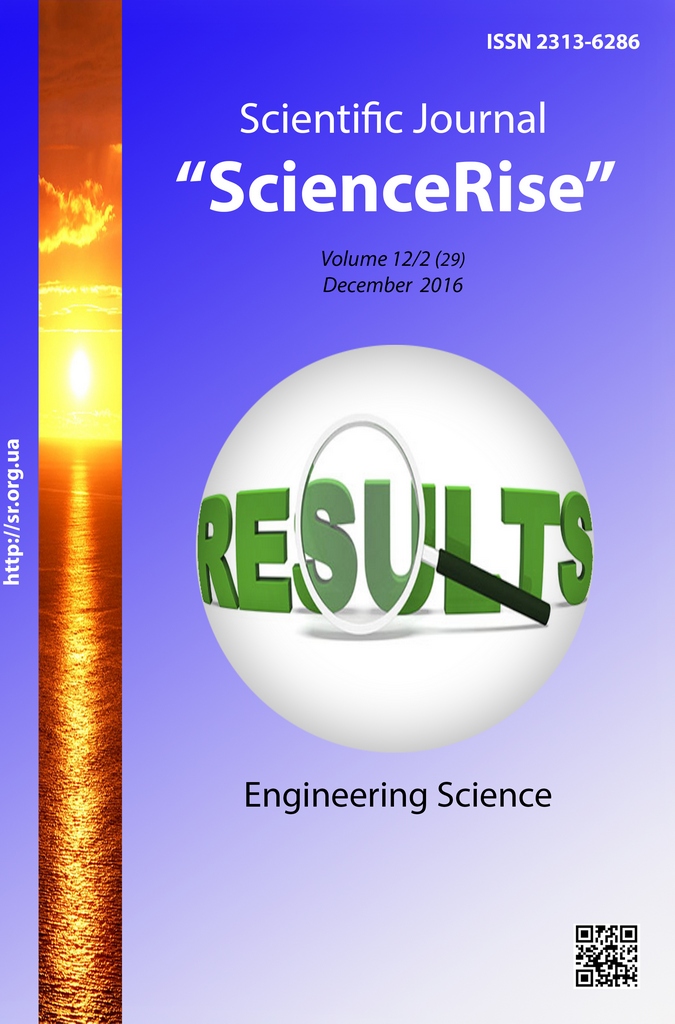Development of algorithms for software implementation of prediction models of technical electricity losses in 6-35 kV overhead power lines
DOI:
https://doi.org/10.15587/2313-8416.2016.85480Keywords:
electricity losses, overhead power lines, neural networks, model, software implementationAbstract
Software implementation of prediction model of technical electricity losses in 6-35 kV overhead power lines (OHPL) is done. The algorithm for software implementation of model is developed, description of input variable parameters and the logical relationship of database elements ("entity-relationship" model) are realized. Testing of the proposed software is done on new data and comparative analysis of calculating electricity losses in overhead power lines, calculated in the proposed software with the data of automated control systems and electricity metering (ACSEM) and other approaches
References
The Cabinet of Ministers of Ukraine (1997). A comprehensive state program of energy saving in Ukraine, 148. Available at: http://zakon3.rada.gov.ua/laws/show/148-97-%D0%BF
Krasovsky, P. Y. (2006). Factors affecting the dynamics of technical losses in power lines. Proceedings of the Dnipropetrovsk National Mining University, 3.
Miroshnik, A. A. (2010). Refined algorithms for calculating the energy losses in networks 0,38 kV in real time. Regional energy issues, 2 (13), 35–42.
Turbin, S. V. (2007). Improving methods for determining environmental loads on air routes taking into consideration subject topographical features of the area. Energy and Electrification, 10, 3–9.
Hamid, B. (1992). Automated load forecasting using neural networks. Proc. Amer. Power Conf. Chicago, 54, 1149–1153.
Gupta, P., Yamada, K. (1972). Adaptive Short-Term Forecasting of Hourly Loads Using Weather Information. IEEE Transactions on Power Apparatus and Systems, PAS-91 (5), 2085–2094. doi: 10.1109/tpas.1972.293541
Panuska, V. (1977). Short-term forecasting of electric power system load from a weather dependent model. IFAC Symp. autom. contr. and prot. electr. power syst. Melbourne, 414–418.
Vorotnitsky, V. E., Turkina, O. V. (2008). Estimation of variable energy losses error in overhead lines because of the weather conditions neglect. Energy systems and electrical networks, 10.
Levchenko, I. I., Satsuk, E. I. (2008). Сarrying capacity and monitoring of overhead power lines in extreme weather conditions. Electricity, 4, 2–8.
Zhelezko, Y. S. (2004). Loss of electric energy in electric grids, depending on weather conditions. Power station, 11.
Ministry of Energy and Coal Industry of Ukraine (2011). Method for determining the technological power consumption of transshaper and power lines, 532. Available at: http://www.mega-billing.com/files/metodika_vtrat.pdf
Osipov, D. S. (2005). Recording of heating of current-carrying parts in the calculation of the power loss and power at non-sinusoidal modes of electric power systems. Omsk: RGB.
Glebov, A. A. (2007). Model of short-term forecasting of power consumption by using neuro-fuzzy systems. Astrakhan: RGB, 21.
Bakulevskiy, V. (2016). Research into the influence of climatic factors on the losses of electric energy in overhead power transmission lines. Eastern-European Journal of Enterprise Technologies, 5/8 (83), 4–8. doi: 10.15587/1729-4061.2016.80072
Borovikov, V. P. (Ed.) (2008). Neural networks. Statistica Neural Networks. Methodology and technology of modern data analysis. Moscow, Hotline-Telecom, 392.
Neural networks. STATISTICA Neural Networks (2001). Moscow: Hotline-Telecom, 654.
Downloads
Published
Issue
Section
License
Copyright (c) 2016 Володимир Леонідович Бакулевський

This work is licensed under a Creative Commons Attribution 4.0 International License.
Our journal abides by the Creative Commons CC BY copyright rights and permissions for open access journals.
Authors, who are published in this journal, agree to the following conditions:
1. The authors reserve the right to authorship of the work and pass the first publication right of this work to the journal under the terms of a Creative Commons CC BY, which allows others to freely distribute the published research with the obligatory reference to the authors of the original work and the first publication of the work in this journal.
2. The authors have the right to conclude separate supplement agreements that relate to non-exclusive work distribution in the form in which it has been published by the journal (for example, to upload the work to the online storage of the journal or publish it as part of a monograph), provided that the reference to the first publication of the work in this journal is included.

